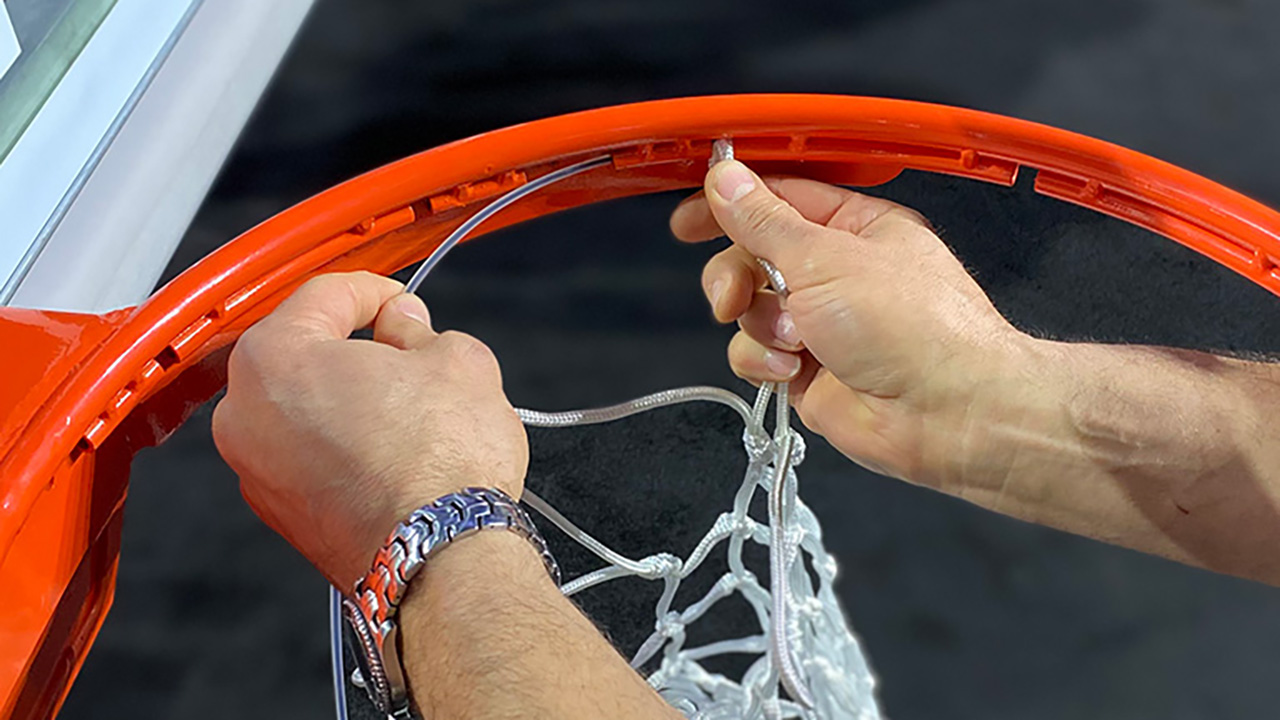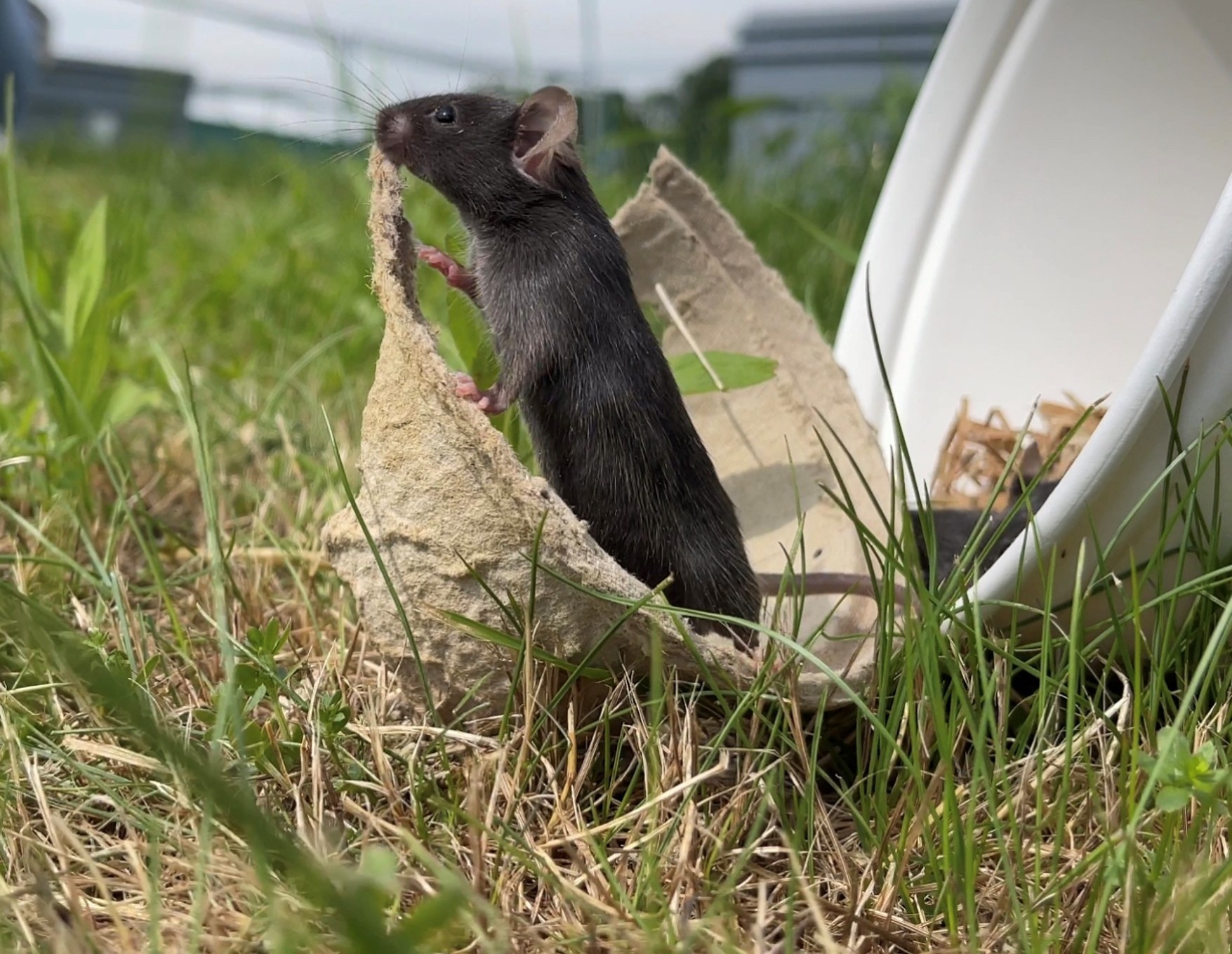HOUSTON — The Final Four had been held in football stadiums before, but the one in Detroit was different. Previously, the game had been held in a “half-dome” setup, which is just what it sounds like. But 2009 was different; this time, the full bowl was used. The court was placed on an elevated platform. Ruey Peck soon saw a problem.
“We could stand at the free throw line, jump up and down and see the whole basket move,” Peck said. “Because we were on a stage.” Usually the stanchion that holds the backboard is set over concrete, or the covering of an ice hockey rink. Peck’s team had to figure something out. They had to jack up the court—literally.
Workers for the stage provider used about 80 jacks—under the basket, under the top of the key, under midcourt—to support things a bit more, and keep stable the things that need to be stable for a basketball game to be played. As a result, that Final Four was played without the basket wobbling around. In future seasons, the team constructed a platform for the basket, so that the weight of the basket would not be on the raised platform. No players had any complaints when I asked them about the court and baskets last week.
The flooring at NCAA tournament games is done by a company called Connor Sports. The baskets are done by Spalding, where Peck has worked for decades. He started his career with Basketball Products International, which is a very descriptive company name. Eventually that company merged into Spalding, where Peck has been ever since. He is an arena sales manager there, in charge of the baskets. This is his 29th Final Four in attendance, he told me; he’s been doing them since 1994.
The NCAA put me in touch with Peck after I saw something I found curious in an early-round game in Albany. UConn was up by 20 on Iona with just a few minutes left. But Andre Jackson Jr. hit the net while going up for an alley-oop and it became dislodged. There was a delay.
And then the delay kept going. I wondered how it was possibly taking so long, just basing things on my own experience with basketball nets. Couldn’t they just loop the net back through? The television broadcast went to commercial, came back for more exciting net-fixin’ action, then somehow went to commercial again. It was during that return to the net that I noticed that the rim was not what I expected. The guy fixing it was using some sort of metal wire to string the net through? I was interested in learning more.
Peck talked me through how it works. It quickly became clear that I have not been paying especially close attention to the net/rim situation at the NCAA tournament. There are not Ram Horns™, which is Spalding’s term for the typical design that I’ve been seeing all my life, on these rims. If you have seem a normal basketball rim with a net on it, you know what these are—the bits where the net goes through metal ties attached to the rim. At the higher end of things, technology moved forward a long time ago, although Ram Horn™-style clasps are still the most common type on playgrounds and gyms. Spalding introduced the first cable tie rim in 1995. (I was not yet five feet tall at the time, and my basketball career ended not long after. I have decided that this is my excuse for not knowing about this.)
By 2000, all of Spalding’s top-end rims came with this cable system. “When you're dealing with the highest level athletes in the world, who emit the kind of force that these guys emit on our equipment,” Peck says, “they’re constantly smacking their fingers and breaking things.” The cable system helps keep the net in place more securely.
The problem in Albany was simply a minor error. The cable should be strung through counterclockwise, Peck told me, but an operator set up the cable clockwise before the game. Still, I was impressed with the technician's composure under pressure. He had to attach the net from a ladder in front of several thousand very impatient fans, and he did it pretty quickly. Both those commercial breaks were only one commercial long. “He took the net off and he just ran the cable the opposite way,” Peck said. “And we never had a problem after that.”
It turns out that this strange but important task can be done pretty quickly. Here’s a video of a net-stringing in Houston that Peck shared with me.
This admittedly isn’t as hard as doing it while standing on a ladder, in the middle of a packed arena and also in the middle of a game, but the guy who strung this net had been working for Peck for about a month and strung it in 1:19. Pretty simple stuff. I bet I could do it! (I arrived in Houston too late to pester Peck into letting me string the nets for the Final Four; he would rightly have said no for a number of reasons, including but not limited to Spalding’s contract with the NCAA to my own incompetence.) Peck himself has had to fix a net himself before, during a 2012 game in Columbus in which a Draymond Green dunk shredded the net just before halftime.
Spalding has teams at all the sites for the NCAA tournament to deal with setup and any in-game mishaps. They also keep a backup portable backboard around in case something goes wrong that their crack team of net-stringers can't fix. “We're the only guys in the building that aren't having a great time,” Peck said.






